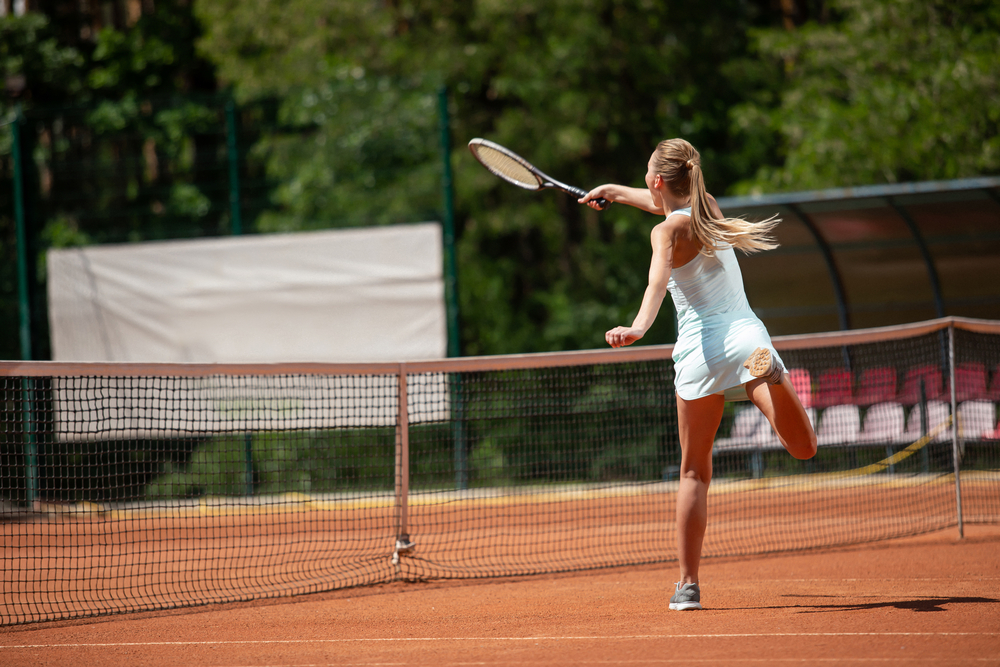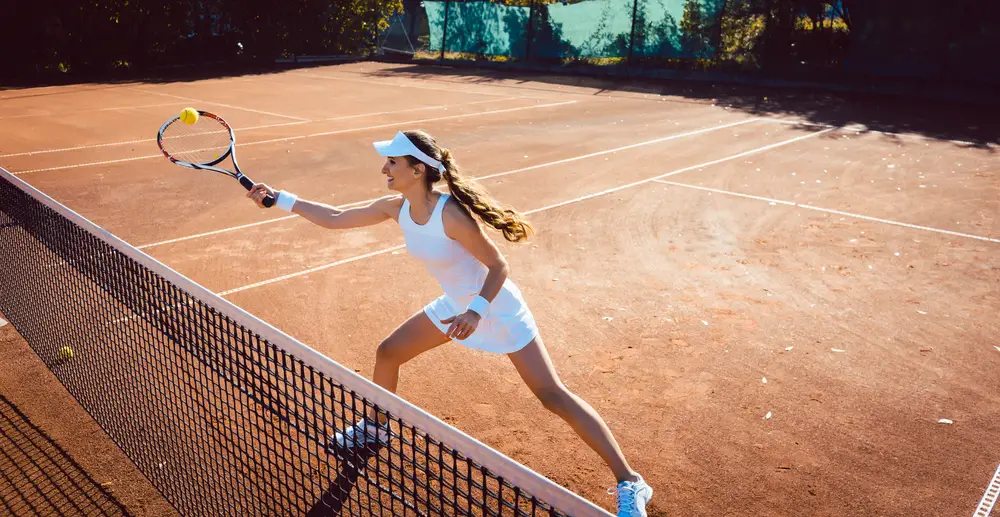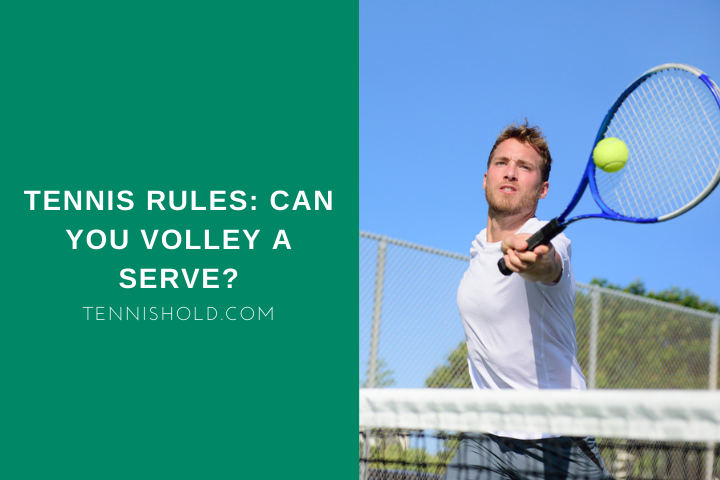If you ever watch tennis, you will see that players always stand far back, generally behind the baseline, to receive the serve.
Why don’t they ever stand close to the net and just volley the serve?
You could quickly get a better angle and be aggressive from the outset. Even if it is harder to react.
You are not allowed to volley a serve in tennis. If you volley a serve in tennis, you lose the point immediately. This is the case even if you volley the first serve. If the returning volleyer in doubles is hit by the ball, it also counts as a volley.
I wouldn’t recommend you make a habit of aiming for the volleyer when you serve. But if you do manage to clip them with the serve, it will be your point immediately.
In this article I will be answering:
- If you can volley a serve
- If you can volley after returning the serve
If you’re keen to learn more about what you can and can’t do with a volley, read on!
Can You Volley A Serve Before It Bounces?

You have now learned that you lose the point immediately if you volley the serve. But let’s discuss it in more detail.
The ITF (International Tennis Federation) rules of tennis state that a player loses the point if the receiver returns the service before it bounces.
In other words, volleying the serve. It does not mention any exceptions to this rule.
There is, however, an occasion in which volleying the serve is considered a let. A let is when a point is replayed.
The most common let is when the serve hits the net and lands in.
If the ball hits the net and then contacts the returning player(s), or anything they wear or carry before the ball bounces, it is considered a let.
The serve will then be retaken.
The way the rules are written means that the returner must give the ball the chance to land in or out.
You will often see in practice matches people catching the ball if it is about to go out. However, even if the serve is going massively out, you must let it bounce first.
The reason for this rule is that there is no way to prove the ball was going out. Let’s imagine the two of us are playing together.
I could catch the ball as I thought it was going out. You may disagree and think it was going in. As I have already stopped the ball, there is no way of knowing where it would have landed.
If I have volleyed the serve, I have deprived you of your chance to hit a shot that might have gone in.
The issue that would come from allowing players to volley the serve is safety and changing the game’s dynamics.
Tennis could switch to a game based almost solely on angle and reactions on return.
You could stand at the net, and as long as you make contact with the ball at a good angle, you could win the point off the return. It could make serving less advantageous.
On the other hand, it creates a safety risk for the returner. Suppose the game develops into one in which returners stand in the box ready to return. In that case, they are putting themselves in danger.
The fastest serves in the world have been hit at over 150 mph.
Imagine getting struck in the eye with a tennis ball coming that fast.
Can You Volley A Ball After The Serve?

You’ve now gotten to grips with the main rules of volleying serves. First, you must let the serve bounce before hitting, or you lose the point.
But what restrictions are there on volleying after you have returned the serve and it has gone in?
Once the serve has been returned, you have a lot more freedom when it comes to volleys.
Volleys are most commonly hit while standing within the service box. There is; however, nothing stopping you from volleying from the baseline if you really wish.
Unlike volleying a serve, you do not lose the point. Still, by volleying a ball at the baseline, you have taken an unnecessary risk.
By hitting the ball before it bounces, you are unsure whether it would have bounced in or not.
That is why almost all players will choose to let it bounce and then hit. This is because the risk of hitting a ball that might be going out is higher than stepping back and taking it after it has bounced.
Have you ever heard of the term no man’s land?
No man’s land is the zone between the service line and the baseline. It is called this because it is where you don’t want to be.
You don’t want to stand here because it is this zone that the ball usually bounces in.
If you stand in this zone, you will at times be forced to volley the ball. If the ball is going to bounce behind you, you would have no choice but to volley it.
This is another example of why top players stand further back when preparing to take the ball.
In the game today, the volley is used mainly as an aggressive shot. However, you open up more extreme angles to hit by coming into the net to take a volley.
The closer you come, the more angles become available. But, at the same time, you also have to react quicker.
Even though it is primarily an attacking shot, you are free to use the volley how you wish.
There is nothing in the rules stopping you from volleying from behind the baseline if you really want. I would never advise you to do this, though.
There is one rule you must be cautious of when volleying close to the net. This is the rule that restricts your ability to reach over the net.
You can’t put your arm or racket over the net to hit the ball. Instead, you must wait until the ball has come onto your side and contact from there.
If, after contacting the ball, you follow through with your racket onto the other side, this is fine as long as you don’t touch the net.
Final Words
The rules of volleying are overall pretty simple. First, don’t volley a serve; you will lose the point. However, if you are going to volley after the serve has been returned, you can more or less do what you wish.
But remember, it doesn’t mean it is the best shot to use just because it is allowed to volley.
Have you ever lost a point to someone over a ball that has been volleyed? Perhaps someone’s taken a point from you because you volleyed a ball that was going out.

